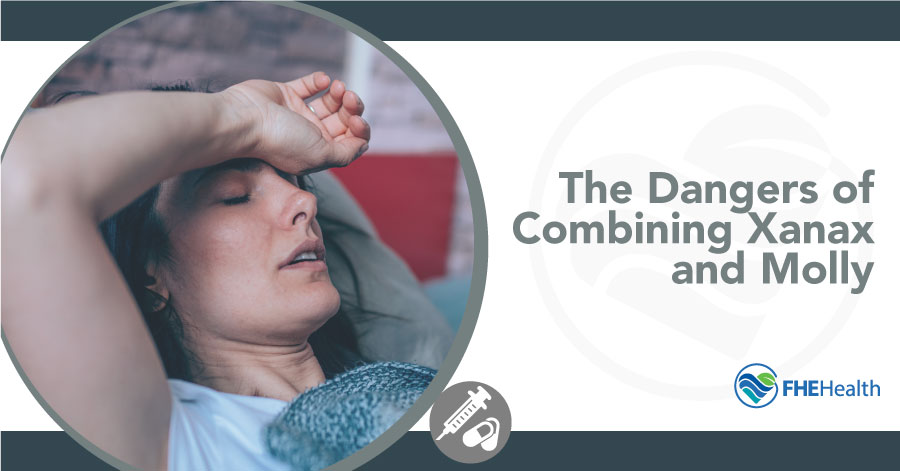
Updated June 27, 2024
The drug Xanax is a depressant, and Molly is a psychoactive stimulant, so the two can seem like an odd pair. Those who use Xanax and Molly in combination have their reasons, however. They are part of a growing trend of “polydrug use,” which experts have called a serious public health threat. Polydrug use, often entailing both illicit and prescription drugs, is the taking of more than one drug or different types of drugs at the same time or after one another.
Taking multiple drugs in combination with each other, such as Xanax and Molly, raises the risks of overdose and other serious side effects. We’ll explore these dangers of Xanax and Molly below, including potential interactions, the mental health impact, and other important information that the public needs to know.
Understanding Xanax
What Is Xanax?
Xanax (alprazolam) is a benzodiazepine medication and is used to treat anxiety. The drug calms down the central nervous system (CNS), by rapidly crossing the blood-brain barrier to create sedation and pleasant sensations of drowsiness.
Mechanism of Action
Xanax binds to GABA receptors in the brain and central nervous system. This in turn increases levels of the neurotransmitter GABA (“gamma-aminobutyric acid”). GABA is what produces sensations of calm and relaxation.
Common Medical Uses
Xanax is commonly prescribed for anxiety, insomnia, and panic disorders. It is meant for short-term use only (less than 40 days, in most cases), because users build tolerance to the drug quickly. When doctors begin weaning patients off Xanax, they gradually reduce dosage over time to prevent rebound or withdrawal symptoms.
Risks Associated with Xanax Use Alone
The main risks associated with Xanax are dependency and addiction, on account of the drug’s fast-acting nature. Because its sedative effects set in quickly and wear off within a few hours, some people may take another dose before they are supposed to. With a pattern of Xanax misuse, tolerance can build up quickly, until an individual requires larger and larger doses to achieve the same level of anxiety relief.
Withdrawal from Xanax can be very dangerous, especially when a person with a Xanax addiction decides to stop cold turkey. They could be at risk of seizures, psychosis, and/or hallucinations.
Other withdrawal symptoms might be:
- Flu-like congestion/nausea/joint aches
- Headaches
- Insomnia
- Irritability/moodiness
- Depression
- Memory and concentration problems






